Sofas in the living room: varieties, choices and options in the interior
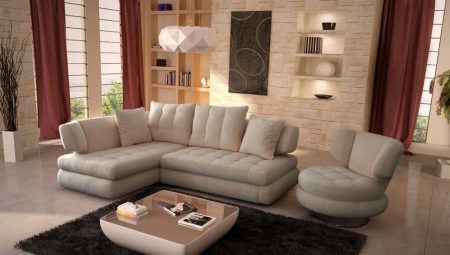
New apartments have become more spacious, which paved the way for more room design options. Although typical Soviet apartments have not changed their size, they have become platforms where completely new interior designs can be applied. The choice of furniture and decor is becoming wider and more affordable, but people still solve standard issues. One of them is what kind of sofa to buy in the living room?


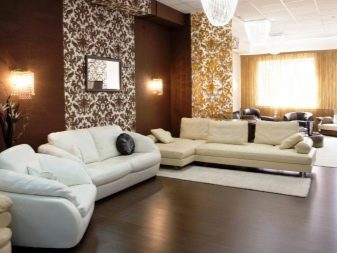
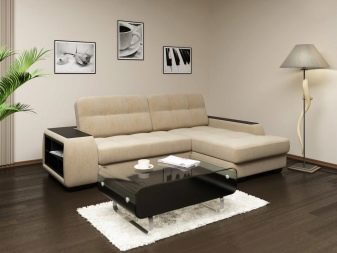
Pros and cons of using
Modern furniture should be comfortable, beautiful, fashionable and, which is very important, durable. And although the apparent variety of choice is hundreds of options, even today all sofas belong to only 6 groups.
This means that nothing has changed significantly in choosing a sofa for the living room. And we need this item in the hall for the same purposes:
- in the recreation area this is the most comfortable furniture;
- if necessary, it will serve as a sleeping place;
- it emphasizes the interior idea, makes the style more convincing.
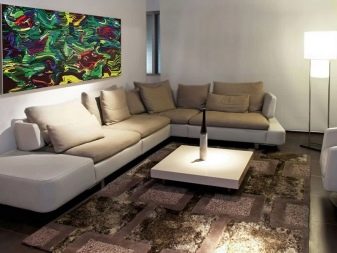
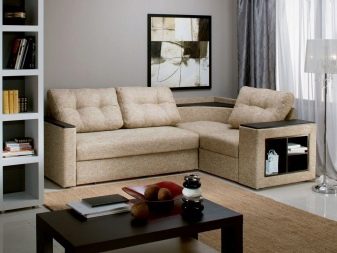
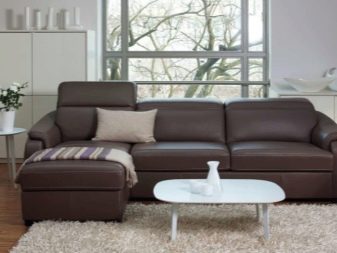
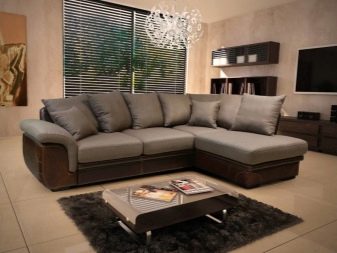
Finally, the reasonable question of whether a sofa can be dispensed with will also arise. In the living room interior, you can theoretically do without it. But in practice, it turns out that this is still the same sofa, albeit in the form of a mattress on pallets, a bench with upholstery, etc.
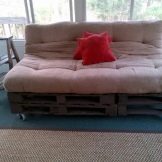
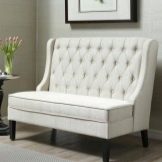
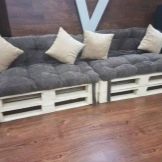
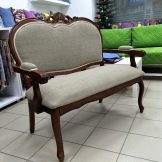
There are some pluses in using the sofa - it is convenient, beautiful, unites households and guests, and is functional. There are almost no downsides. Unless a sofa can become a drawback of the living room, which obviously does not fit the room - neither in color, nor in design, nor in form, nor in material it is "friendly" with other elements of the space.But if the matter was only behind the sofa, it was he who had to adapt to the existing situation.

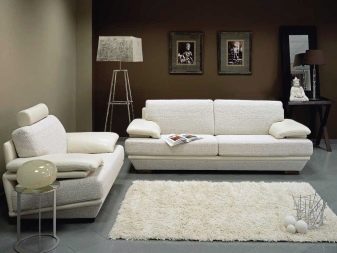
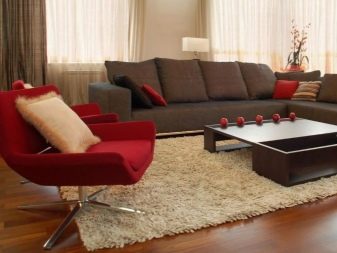
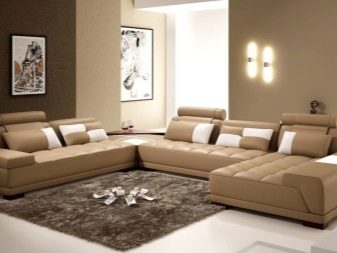
Types of structures
As stated above, sofas are divided into 6 groups or types. Within this classification there may be branches of their own, but they are no longer so essential.
- Modular... These designs are made up of individual modules that differ in shape and size. They may differ even in the materials of manufacture, but this is less common. The modules may not even be connected to each other in any way, they are just geographically located nearby. But if the model is elite, then it can be equipped with special magnets that fix the modules.
As a rule, the components of such a sofa are light, they are easy to lift and move to another place. And this makes it possible to often transform the sofa. This is necessary so that the sofa can serve different purposes.

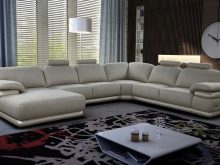
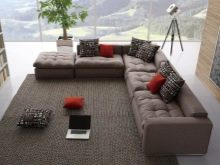
- Island art sofas... The seats of such a sofa can be firmly fastened to the back and armrests, and it will not be possible to disassemble / assemble such a structure again. In most cases, these are non-folding soft sofas. Round, oval and even wave models are quite popular today. Island sofas have a backrest in the same upholstery as the seats. Such furniture was created for installation in the center of a spacious room. Usually you can sit on such a sofa from different sides (it is two-sided). Island sofas are not actually intended for sleeping, they do not imply a sleeping place.
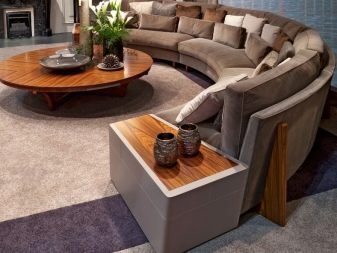
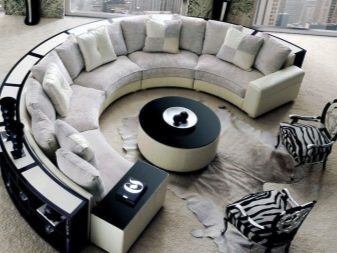


- Sectional. They are usually called straight and angular, but their real name is sectional. The buyer can choose a product with a different number of sections. The manufacturer twists seats, backs and armrests, etc. A custom-made sofa immediately implies several options for sections. A large sofa is a structure in which there are 7 or more sections. The compact version of the sectional sofa is the usual straight line. Such a sofa is often used for zoning a kitchen-living room. This is a good choice for those who wish to settle for a versatile option.
If you are going to put a sectional sofa in the center of the living room, it should not have a very high back, but the one that is should have high-quality upholstery.


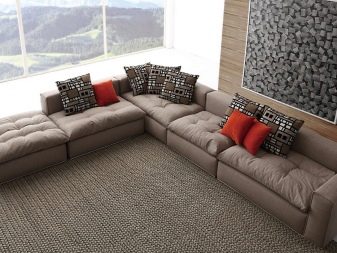
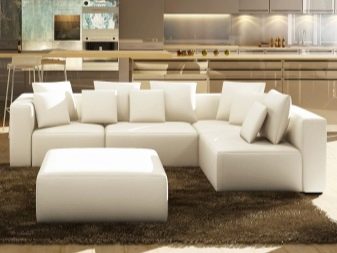
- Corner compact. This is the segment of budget corner sofas and very popular sofas. Dimensions are chosen by the buyer, but the choice usually comes down to 2-4 standard sizes. Such a folding sofa is suitable for sleeping and relaxing. Compact types of such models rarely do without a bed section, therefore the name of a sofa bed is quite fair for them. There is usually a bedding box under the ottoman. It is believed that this option is convenient for those who want to buy both a sofa in the living room and an additional (spare) sleeping place.
It's great if you buy a model, the angle of which can be rearranged to the other side, if the need arises.
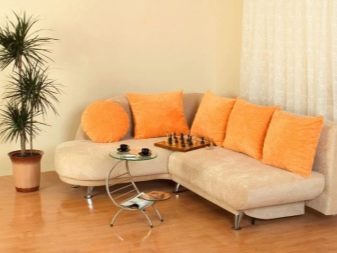
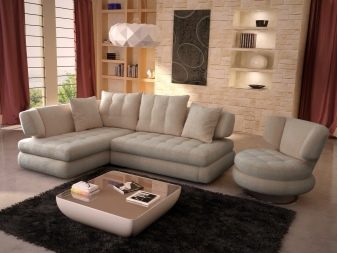
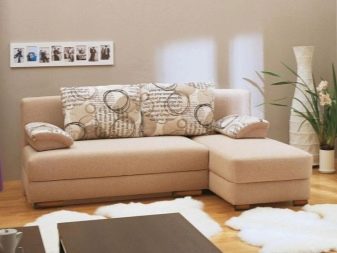
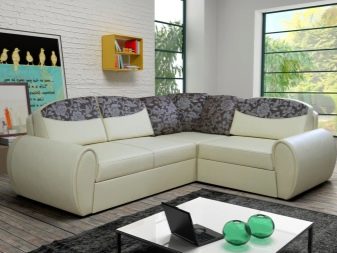
- Mattress sofas. And these are high quality sofas that are suitable for sleeping. The sofa has a full thick mattress. The design itself can be either straight or angular. When unfolded, you get a full-fledged bed, and much better than in the case of a corner compact sofa. Maybe three-seater and not only, suitable for those who have to sleep in the living room.
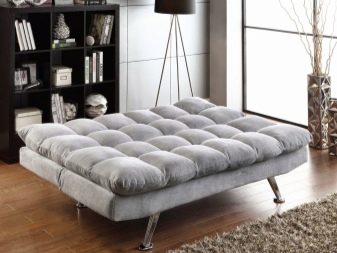

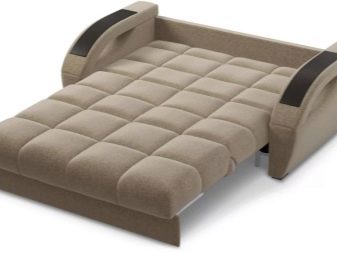
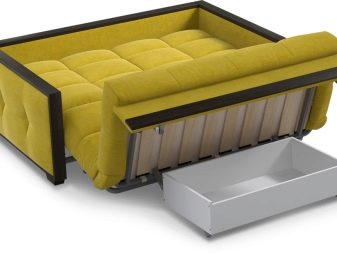
- Sofa with folding bed function. During the day it is an ordinary sofa, at night it is a bed that can be laid out on top of the sofa. Even the pillows in this case will not have to be removed. But keep in mind that the bed will be high, therefore this option is more suitable for adolescents. It is expensive, it is found on sale less often than other types.
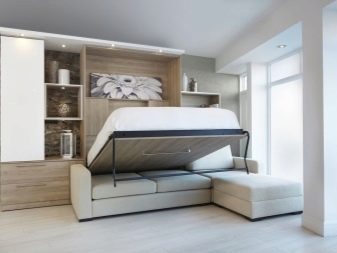
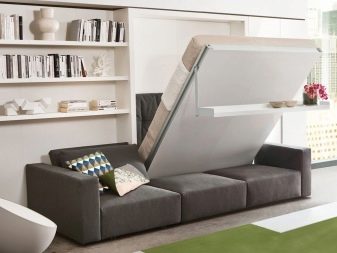

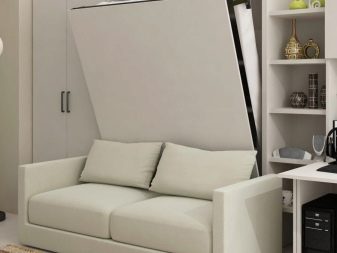
Above, only the types of sofas are described, the design features of which made it possible to form such a differentiation. But bay windows, eurobook sofas and accordion sofas are a more detailed division. In addition, the same folding mechanism can apply to different types of sofas.
Manufacturing materials
Metal, plastic and glass are actively used in the manufacture of furniture, but still they are inferior in prevalence to wood and its derivatives.
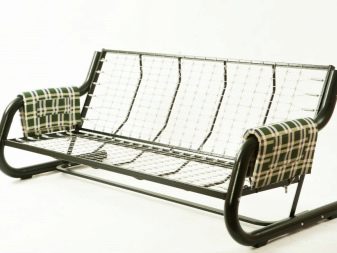
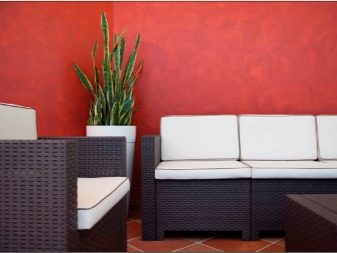
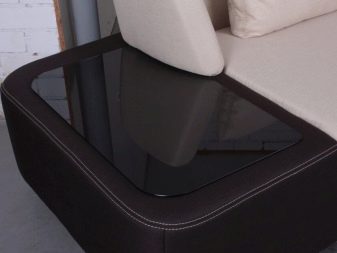
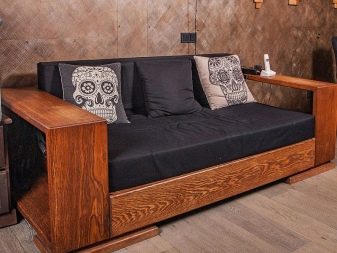
Frame
The frame of the sofa can be made from solid wood, plywood, MDF, fiberboard and chipboard, OSB. Beams and slabs are suitable for supporting furniture elements, and thin plywood sheets can be used for sheathing the frame. But if we talk about quality, then modern materials are inferior to wood in many respects. Its derivatives can be attractive both externally and are not expensive in terms of cost, but they cannot repeat the characteristics of the array.
Walnut, ash, oak, beech - these trees make excellent furniture, which is also used in the frame of the sofa.
Today, inexpensive materials are cladding that change their appearance and performance. by lamination, postforming, caching, veneering. So the materials are gaining strength and they are quite relevant for the manufacture of furniture facades.
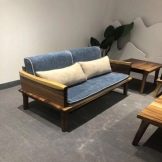
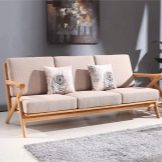
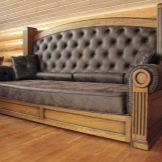

If you look for an alternative to the array, then this is, of course, MDF boards. They are obtained by dry pressing the wood fibers. The binder is urea resins. MDF is considered a highly environmentally friendly product. The material is simple, easy to process, which allows you to create complex parts from it.
Upholstery
Today, a potential buyer has a choice - to buy natural (eco-friendly) fabric for the sofa or synthetic. And the question really often stands this way, because many buyers can choose the type of upholstery right in the store. Undoubtedly, natural fabrics are preferable, they are hygroscopic and breathable.
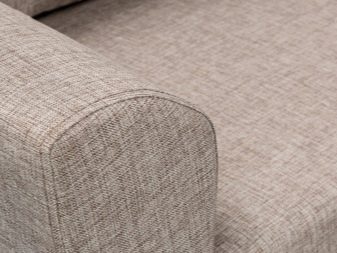

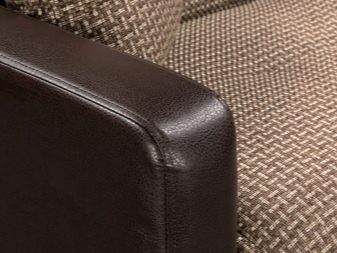

Upholstery options.
- Cotton. Affordable, tactile material, but this material has a limited shelf life.

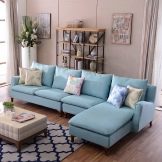
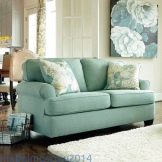
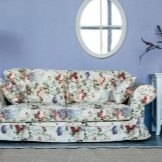
- Jacquard. The material is distinguished by a relief texture and high density, the fabric does not wear out quickly and is not afraid of ultraviolet radiation.

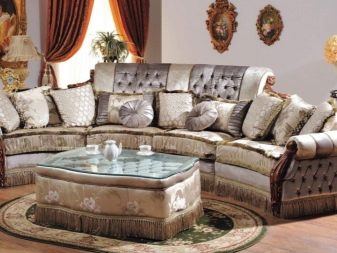
- Tapestry. Furniture with such upholstery looks elegant and aristocratic. It is durable and natural, but it has a tendency to abrasion.
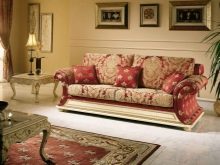
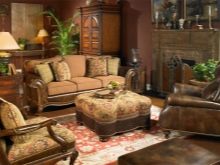
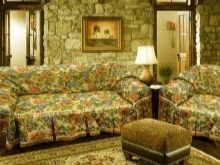
- Silk... It is rarely used. They are usually fitted with antique furniture. The surface is very pleasant to the touch, the material is hypoallergenic and easy to care for (but the material is cold).

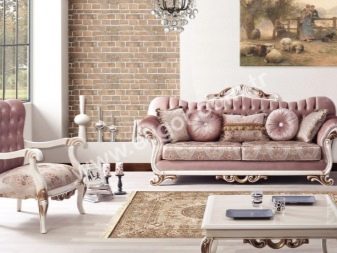
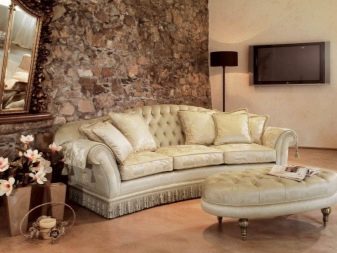

- Leather. Luxurious, durable, moisture resistant, easy-care upholstery, but high cost, tendency to crack over time and stickiness are the disadvantages of such furniture.

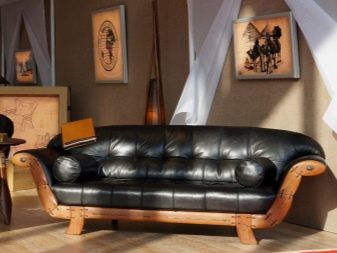

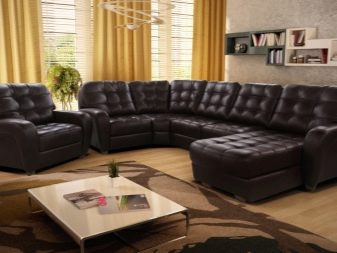
- Arpatek. It is an artificial upholstery that is tear-resistant, easy to clean, has good color retention and is not prone to fast abrasion.
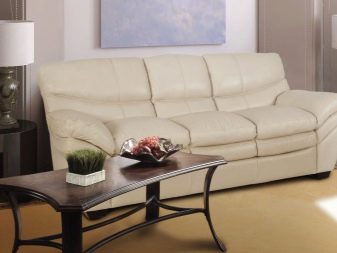
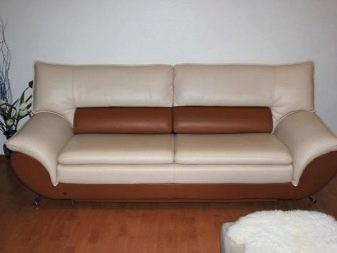
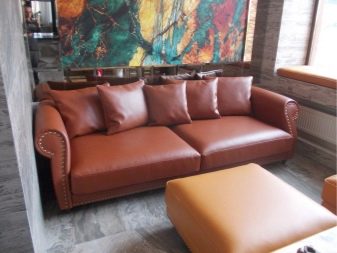
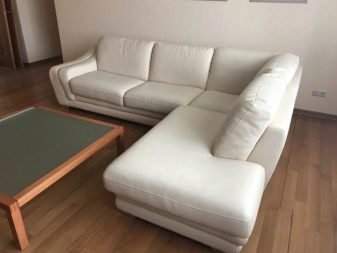
- Scotchguard... It resembles a jacquard, but it costs less than it. This material is durable, but it can fade in the sun.
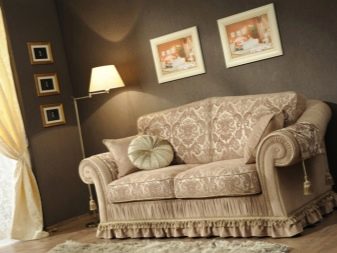
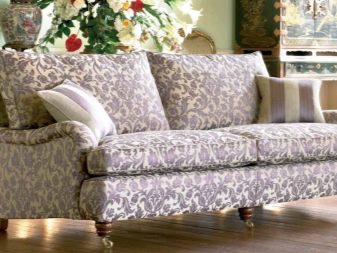
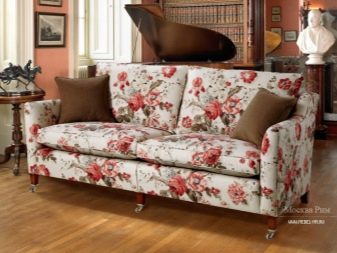
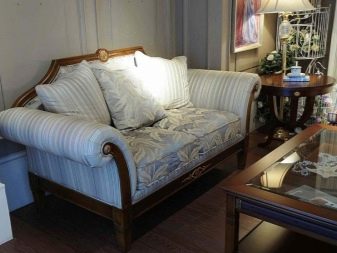
- Flock... Excellent coverage, easy to clean and water resistant. Dust does not stick to it and nothing clings to its texture, but the material can wear out over time and is prone to absorbing odors.
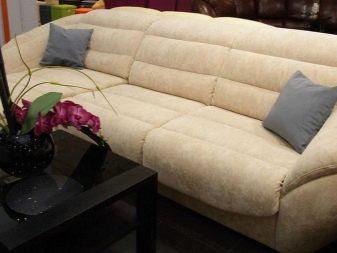
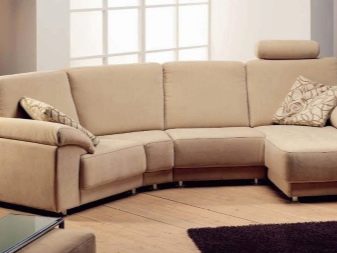
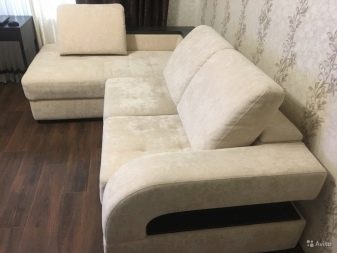

- Chenille. Strong and durable material. Fading and not stretching a little, but absorbs moisture and, for example, is not able to cope with the marks of a cat's claws.

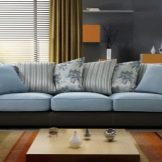
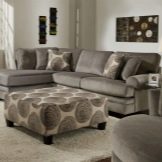
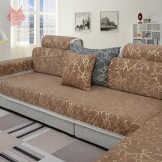
And there is also microfiber, forest, courtesan, microfiber - but these are all artificial materials for upholstery. Experts advise, when choosing it, to take into account the goals and functions of the sofa: if they often sleep on it, then a material with synthetic inclusions is preferable, which will not allow the fabric to wear out quickly.
Filler
There are also a lot of them, and the most popular option is considered spring block. He is responsible for a high level of comfort, for the correct distribution of a person's weight. The filler has many advantages, including long-term operation, reliability, elasticity, orthopedic properties. But the disadvantages include squeak, which can appear over time, and costly repairs if a spring break occurs.
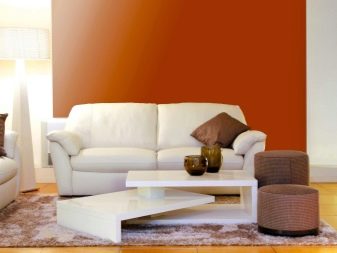
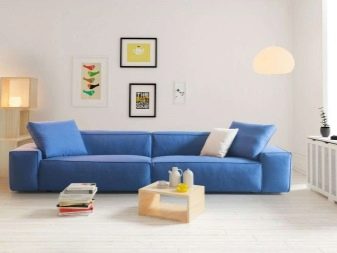
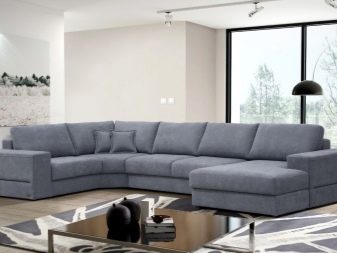
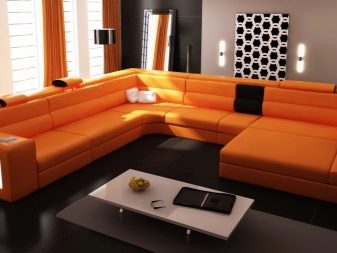
Other filler options.
- Polyurethane foam - synthetics, which can bypass rubber and rubber in quality, can be cast and block.Does not accumulate dust, does not cause allergies, withstands loads, etc. But some versions of this material are stiffer than the same spring block, and cheap polyurethane foam will quickly lose its elasticity.
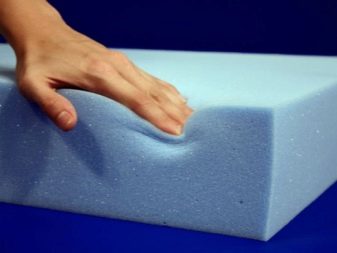
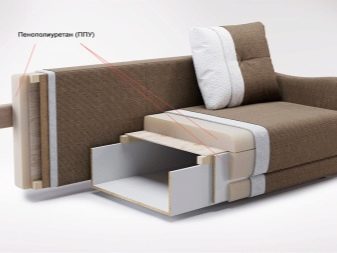
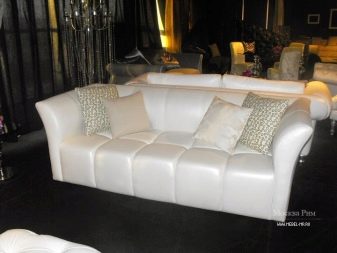
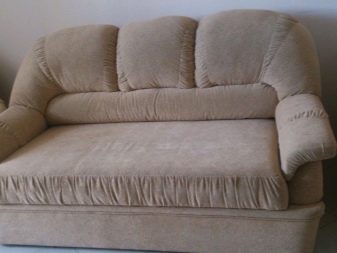
- Sintepon - the material is often used in inexpensive models. It has an elastic and resilient structure, fungus cannot start in it. The material will not cause an allergic reaction, even though it is synthetic. But the operating period for the padding polyester is relatively short. And there is still no single technology for its production, so the risk of running into low-quality material is very high.
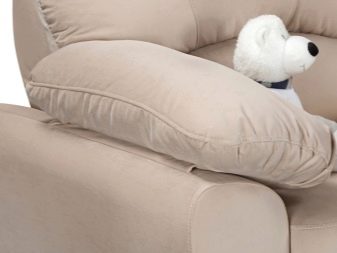
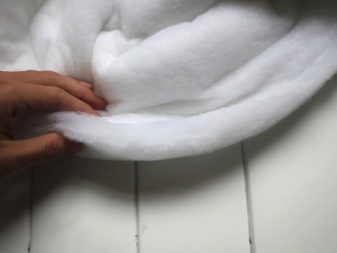


- Periotec. This filler includes polyester fibers. This is a highly durable and resilient material, as it successfully combines, for example, bamboo and viscose or corn fibers, as well as flax, coconut, wool. It is made using a special three-layer technology. This material is completely safe for human health. It has a lot of advantages, and the disadvantages include only a high price and relative rigidity.
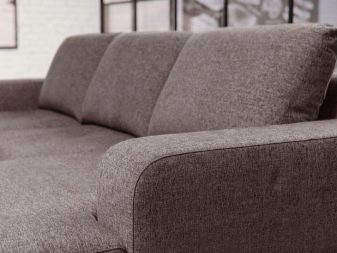
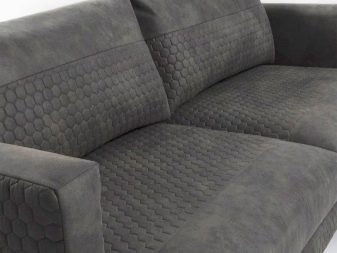
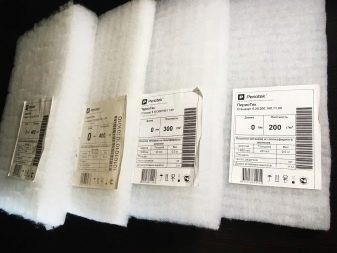
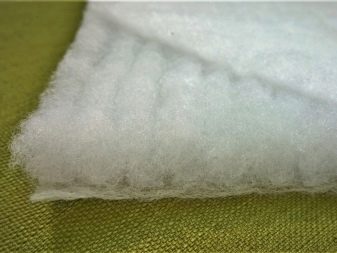
- Holofiber... And this is a modernized synthetic winterizer familiar to many. The spiral structure of the material guarantees a quick recovery of the shape after long loads. This is an almost ideal material, since no significant shortcomings have been identified in it. It is safe, lightweight, odorless, non-pilling, breathable. It finally does not support combustion.
Other fillers worthy of the buyer's attention include latex, durafil and struttofiber.

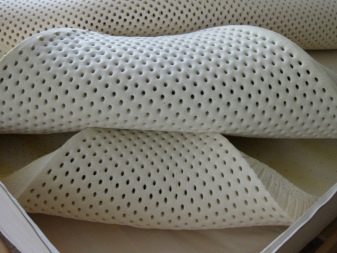

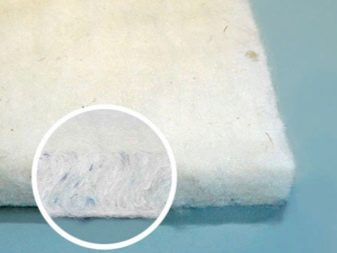
Shapes and sizes
The dimensions of the sofa must meet the main requirements - to organize comfort for the user, take up little space and be optimally integrated into the project of the room. The dimensional characteristics are the sofa's height, length and width.
Sofas are:
- full-sized - up to 200 cm in length (not less than 180), folded width 80-90 cm;
- one and a half - length 140-170, width - 70-90 cm;
- small - length 120-150, width - 70-80 cm.
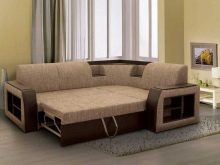
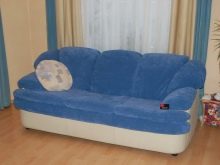

The main role in this classification is assigned to the length, which can be interpreted as the number of seats. But the width and height may be equal for different models.
The shape of the sofas can be straight, angular, U-shaped, round, semicircular, oval, radius, etc. There are long roomy models, and there are narrow and low, mostly decorative sofas (models for one).
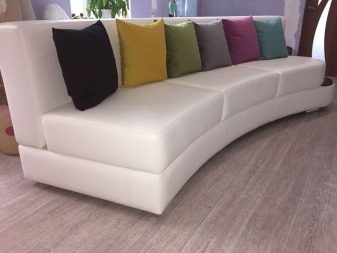
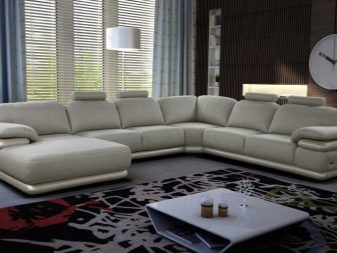
Color spectrum
The modern buyer can find an exclusive and extravagant sofa color scheme. But some colors will always be in the top, while others share the laurels of fashionable (which are leading in sales for a couple of seasons) and sofas "for everybody". The latter are more often made to order.
Color solutions for modern sofas:
- upholstery white, milky, ivory - beautiful, but easily soiled, and even leather models require special care;
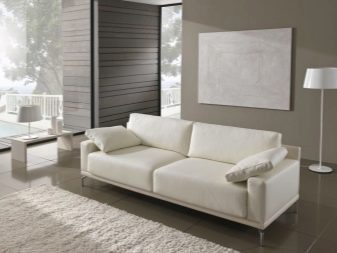
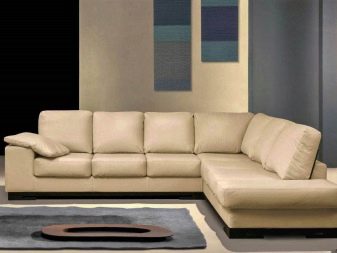
- burgundy - fit into a spacious living room;

- chocolate, brown - if the decoration of the hall has similar colors in other furniture or decor, the option is good;
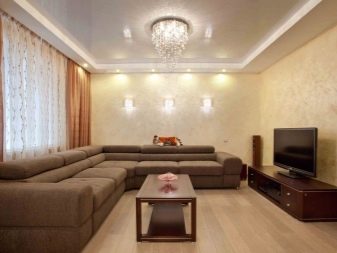
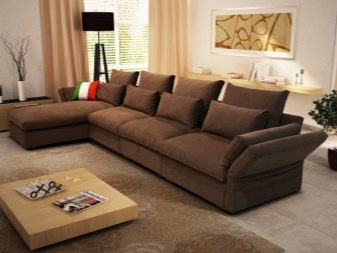
- terracotta - a fashionable option for the hall in warm colors;
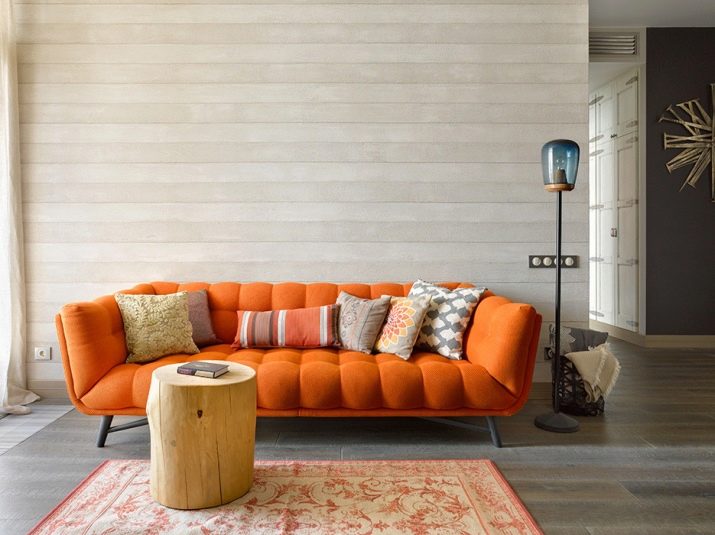
- blue and turquoise color the last seasons are in fashion, especially the shades of rain, the sky before a thunderstorm;


- purple the sofa looks better in the pop art interior;
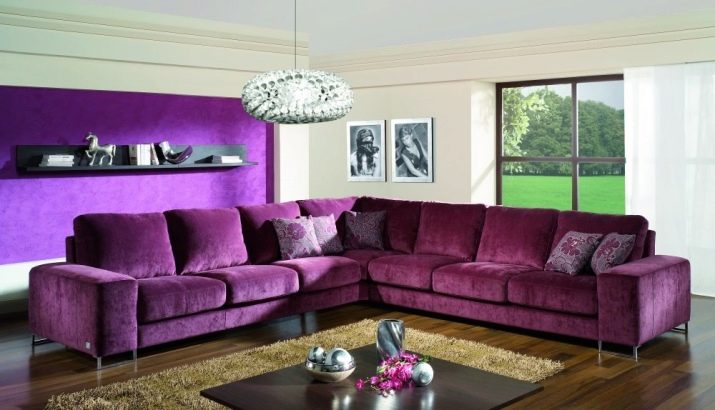
- bright red - suitable for bold interiors, as well as white and gray living rooms;

- beige - pastel shades of furniture are classics;
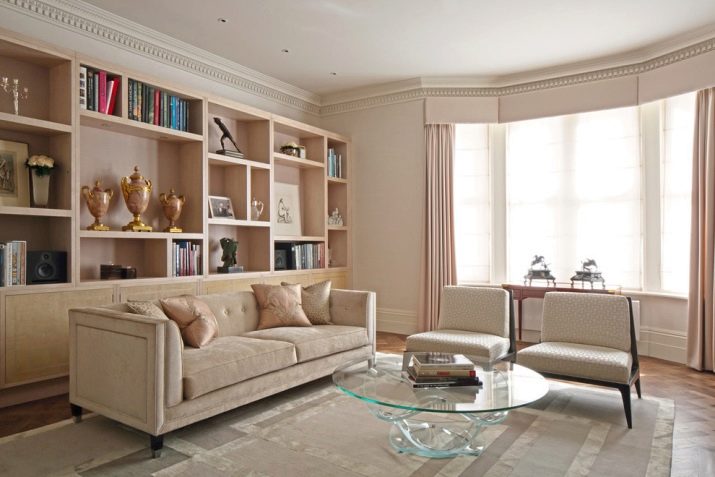
- green - will look good in eco-design;
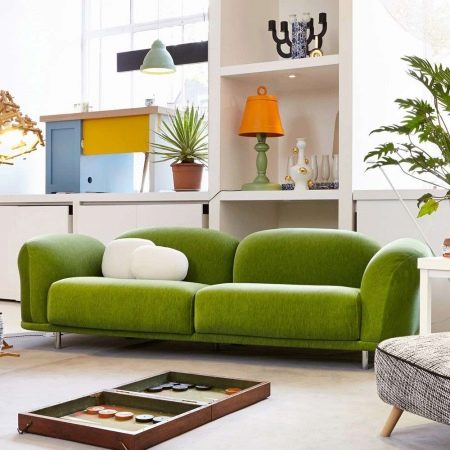
- emerald - fits well into expensive, noble styles;

- yellow - a reference to the Scandinavian aesthetics;
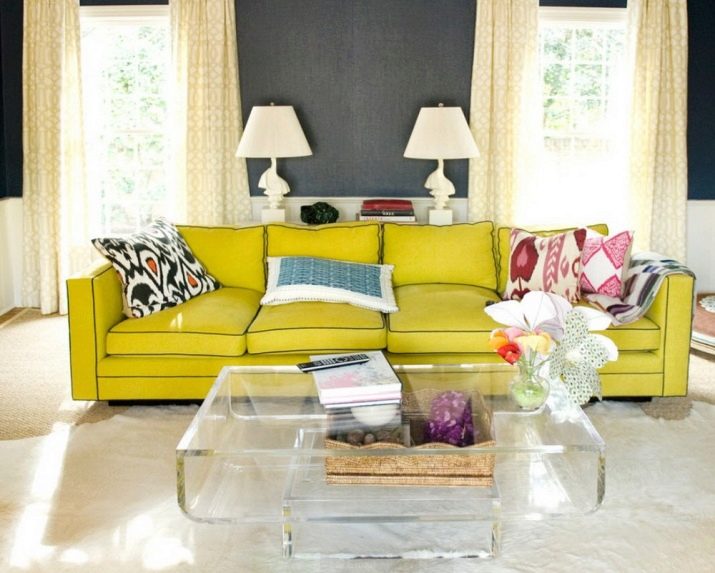
- purple - a color to be careful with (capable of causing apathy).
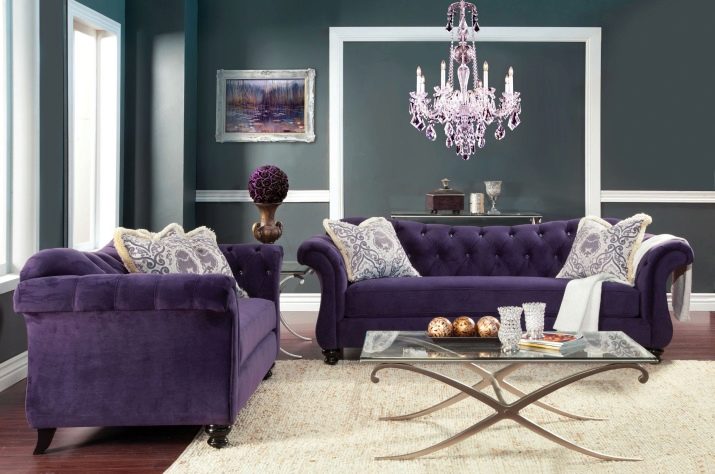
Of course, you can choose not a plain sofa, but the more colors you use in the interior design, the more difficult it is not to go beyond the conceptually correct solution.
Styles
The sofa in the English style is, of course, beautiful and elegant, but the key word in the aspect of choice is relevance. It is very important that the furniture is not only beautiful, designer, fashionable. It is necessary to integrate it into the existing design and into a certain interior style.
The most popular sofa styles today are:
- English - family model with rounded armrests in monochromatic upholstery in natural tones;
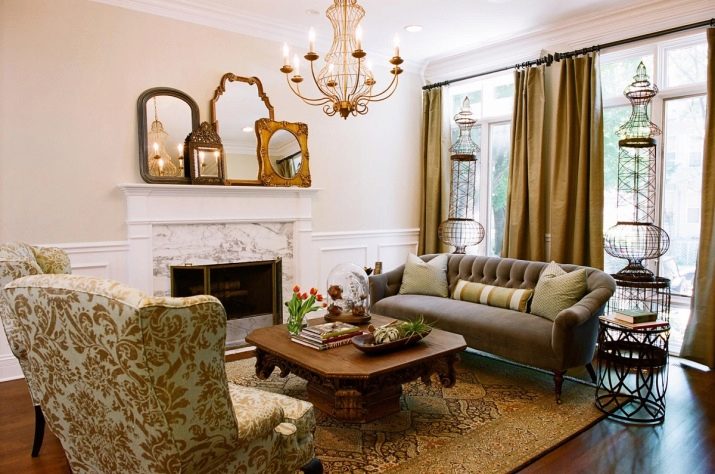
- fusion, lounge, pop art and the various French styles are conveyed well with the convertible sofas;
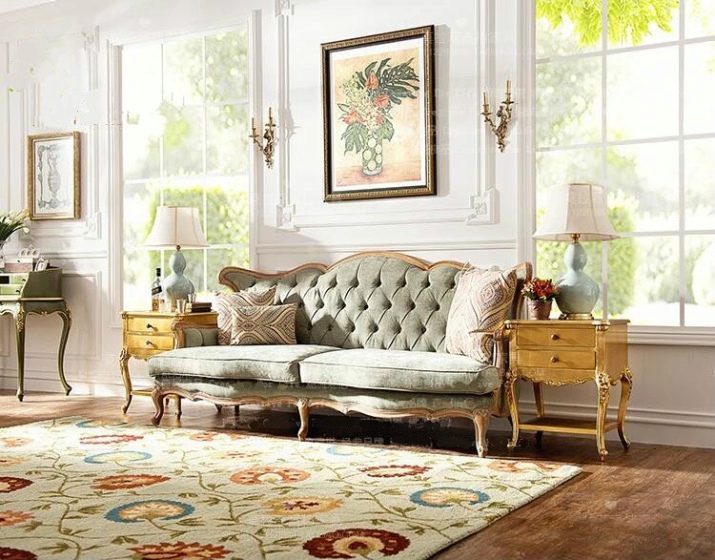
- Victorian style as well as loft will perfectly emphasize a stylish Chesterfield sofa (leather, velvet or flock upholstery);
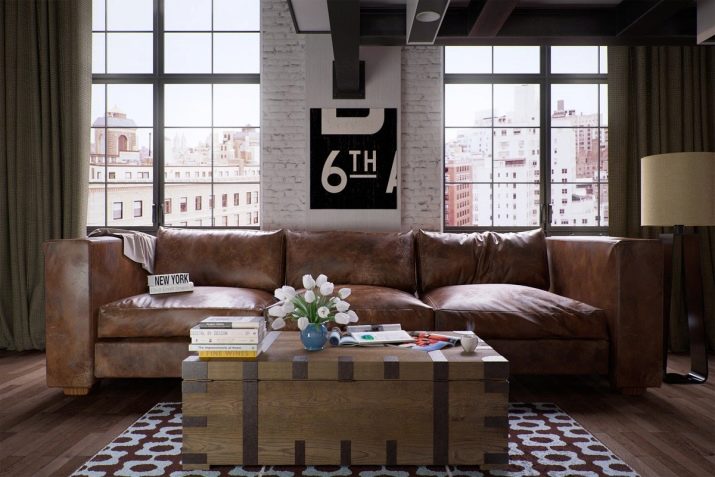
- art deco, neoclassic, venetian style - this is an excellent soil for a taxido - a chic sofa created for a glamorous interior;
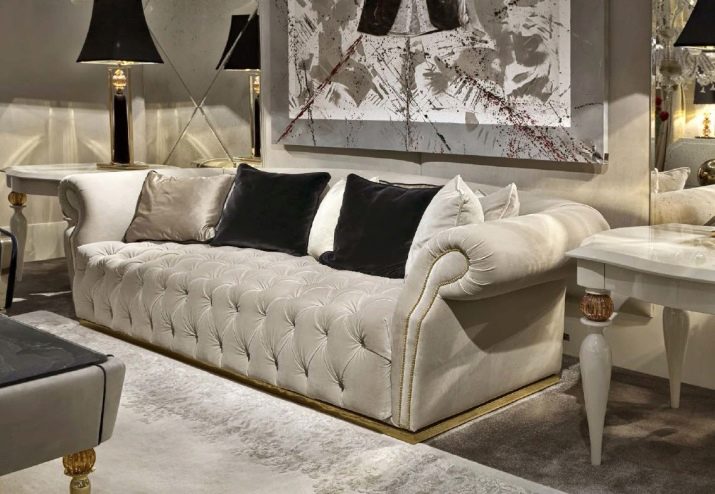
- in a retro, Scandinavian style, a camelback is applicable - This model is interesting in that its back is similar to a camel's back, which, in fact, reflects the name.
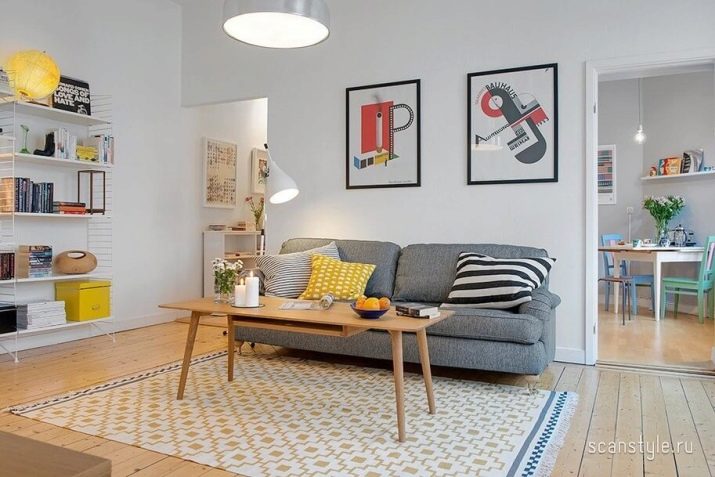
Finally, the most popular furniture product in this category today is scandinavian sofa, which is more common in the Scandi style, but it also comes to living rooms, where the style is basically blurred. This is a minimalistic two- or three-seat model with clear pillows. It has laconic textile armrests and, as a rule, wooden legs.

Sets with armchairs
It should be said that today an independent combination of furniture is popularized in interior design. This means that you are not buying a ready-made set or kit, but you yourself make up comfortable and beautiful combinations. The sofa and armchairs are no exception. But even if you assume that you are not ready for such a risk, think about a set of furniture that differs in color, for example.
And remember that the armchair should not be decorative. If you have a large corner sofa, the chair's mission remains unclear. Consider the size of the living room: sometimes the desire to put a set of upholstered furniture in the room simply goes against common sense. A great option is a chair with a footrest. It is comfortable, stylish and does not need a symmetrical piece of furniture.
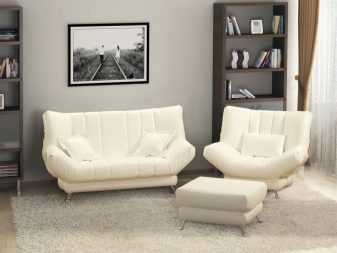
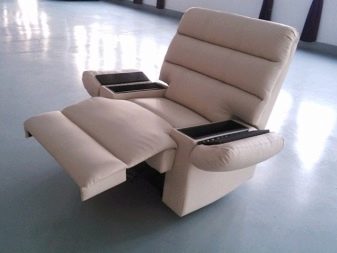
How to choose?
When choosing a sofa, several requirements are taken into account at once. And if one buyer considers only elite models, which are a priori expensive, another looks at comfortable options with pillows at the best price. And the third is only interested in the original models, so that "not like everyone else."
Experts recommend building a sofa selection based on the answers to these questions.
- What is the size of the living room, in which part of it is the sofa planned to be located?
- How many people will sit on it at the same time on ordinary days?
- How often will the sofa be used in principle?
- Will it be used as a bed, how often?
- Are there animals in the apartment, small children?
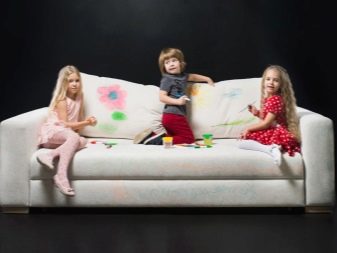

Having decided on the shape, size, color, you need to go to the choice of the transformation mechanism. There are several of them: dolphin, book, eurobook, accordion, tick-tock, click-clack, draw-out mechanism. This is not to say that one of the mechanisms is significantly superior to others.
It is known that a lot of purchases happen, as they say, on emotions. And the owners then regret the haste to choose. That's why do not be lazy to make a list of requirements that will help to take into account all the nuances and wishes.
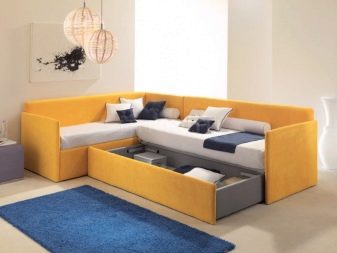
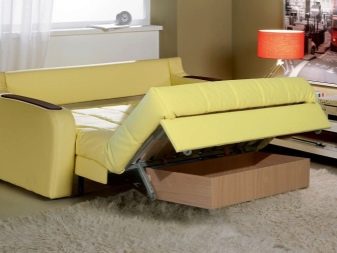
Location rules
For small living rooms, corner sofas are a good solution. Of course, you can't put them in the middle of the living room, but they will fit perfectly against a long wall. If zoning of space is necessary, then a corner sofa against the wall will not give such an effect. But here you have to choose: either preserving free space, or zoning.
Other options.
- Across from the door - this is most often a window setting. The variant is rare, but common. Especially if the sofa is low and they are not going to lay it out.
- Next to the dining table. This means geographically close location, not overlapping. For example, a sofa sits against a long wall with a dining table behind it.
- In the center of the living room... Suitable only for very large rooms or options for combining a living room and kitchen. In this case, the sofa will be an umbrella. The disadvantage of this placement is the inability to use the wall above the sofa.
- Next to a low table. It is convenient even in a relatively small space. If the hall is small, then the table should also be miniature.

Sometimes in one living room, the owners manage to combine two sofas. And this is not the worst option if the recreation area, according to the owners, should be large. But the subtleties of placing two sofas are in the fact that there is a low table between them, which can be transformed into a full-fledged large dining table. Laying out two sofas next to each other is also problematic, but possible.
The most common location of the sofa is in front of the TV, it provides maximum comfort while watching TV. There may be a group of armchairs or poufs next to the sofa, as well as hanging lamps.
Interior design experts pay attention to: all placement methods are divided into symmetrical, asymmetrical and circular. In the first case, we are talking about a square or rectangular living room. The asymmetrical arrangement of the sofa will suit a non-standard living room or a straight room. Circular furnishings make it possible to create cozy zones in the room. And this option is perfect for the living room. Usually, the center in such an organization of space is a carpet, a TV, perhaps a fireplace with shelves above it, and the rest of the furniture is placed around them.

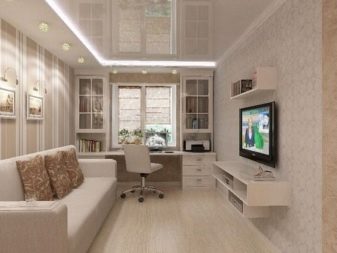
Successful examples
Specific examples will tell more eloquently how an ideal sofa in a living room might look like. The selection below contains 15 beautiful illustrations of how the sofa harmoniously fits into the space. Sometimes you need to fight stereotypes and not be afraid of bold interior solutions.
- A huge sofa that ideally forms a large seating area. For a long and relatively narrow living room, this is a good option. If you fantasize, then around the corner of the sofa you can also place a dining area.

- A lovely gray sofa that looks like a vintage piece from luxurious interiors. The set includes an armchair that does not match the color of the sofa, but perfectly matches the pillows. For a light-flooded living room, this is ideal.
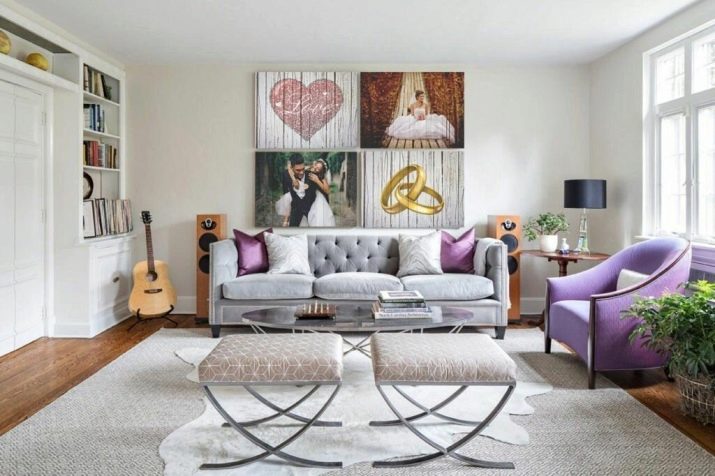
- Composition of two sofas and armchairs of different sizes. Suitable only for a spacious living room, or, as in this case, for a hall, where there is little cabinet furniture and the emphasis is on the recreation area.
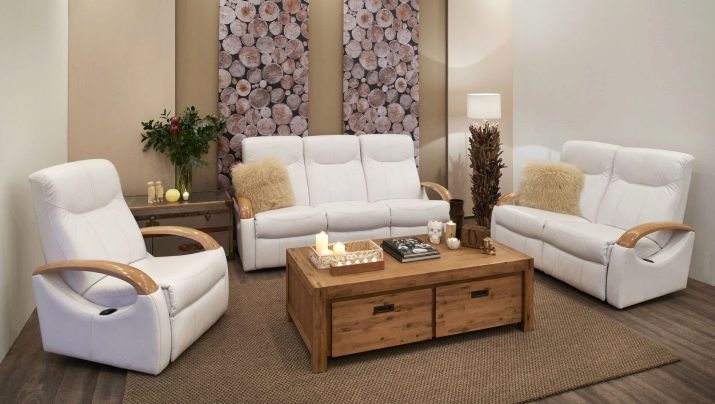
- Highly concise and simple option, but this is what he is good at.

- The choice of the sofa in this case is remarkable, since this is a model that does not weigh down the space. Triple, Scandinavian, pleasant in color, it fits perfectly into the narrow living room.
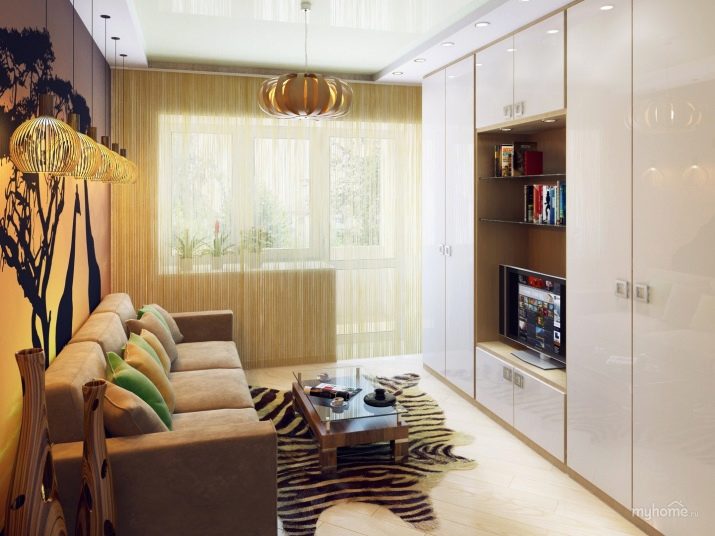
- Not everyone likes emptiness in rooms; for many, comfort is a pleasant closeness, proximity of objects. And this example shows how this desire can be translated into reality.
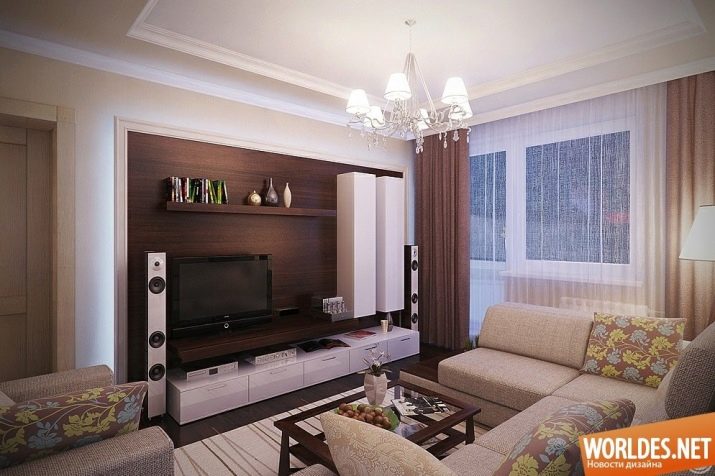
- A small sofa surrounded by side tables is a good option for a small family. Perfectly selected triptych on the wall. An excellent minimalistic solution.
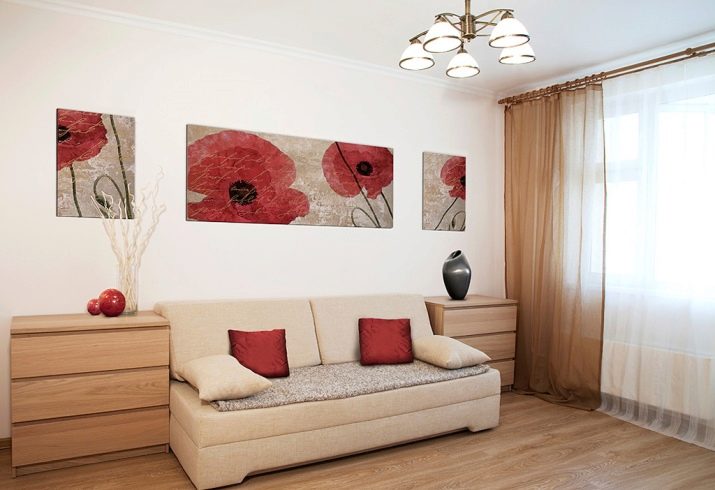
- Another neat choice that automatically adds style to the space. Such a sofa cannot be folded out, but if this mission is not entrusted to it, then why look for reasons to abandon the sofa (“just in case” is not an argument)? And again, this is a small typical living room.

- A classic solution that is complementary to an elongated room. At the dressing table there is a bench from one set with a sofa, which looks very nice.
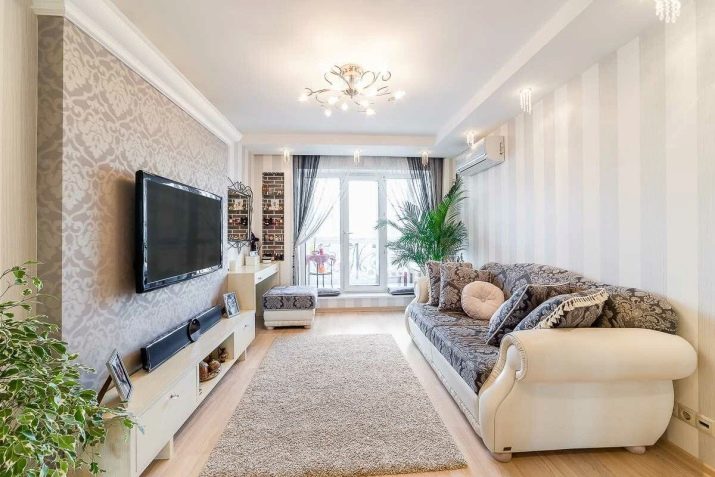
- An example of a space in which the sofa takes over the additional functions of a zoner... For combined rooms, the option is very good.
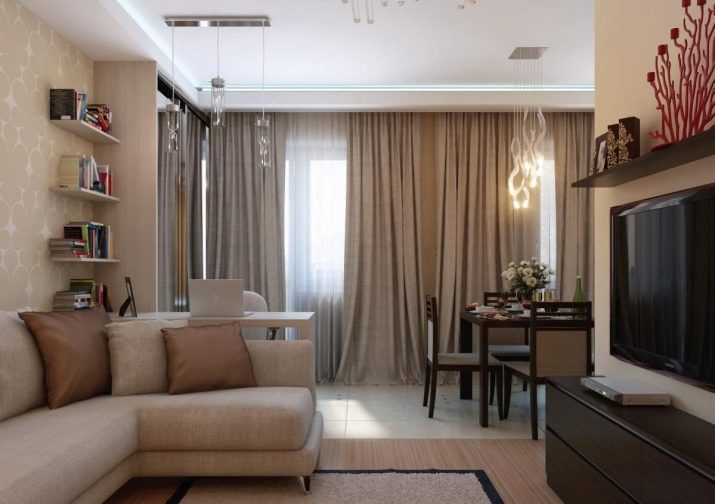
- A very modern and democratic idea. The area above the sofa is brilliantly played, and the red armchair goes well with the gray sofa upholstery.
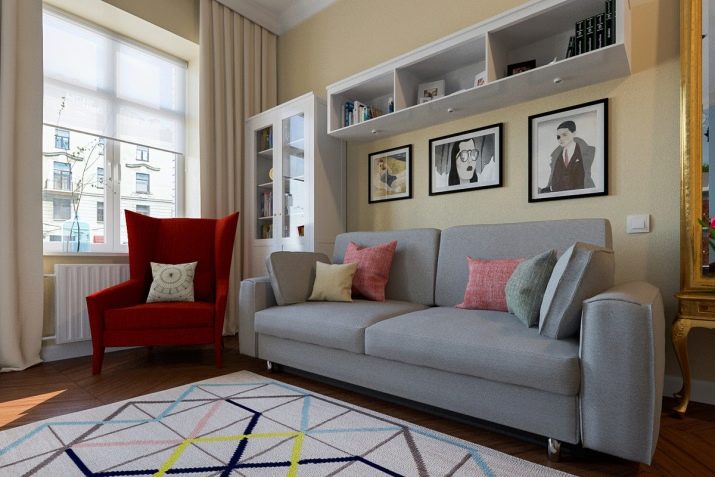
- In this example, a set is involved: a large sofa and two armchairs. And these two armchairs form a "dialogue zone", which is a very good solution for such long narrow rooms.
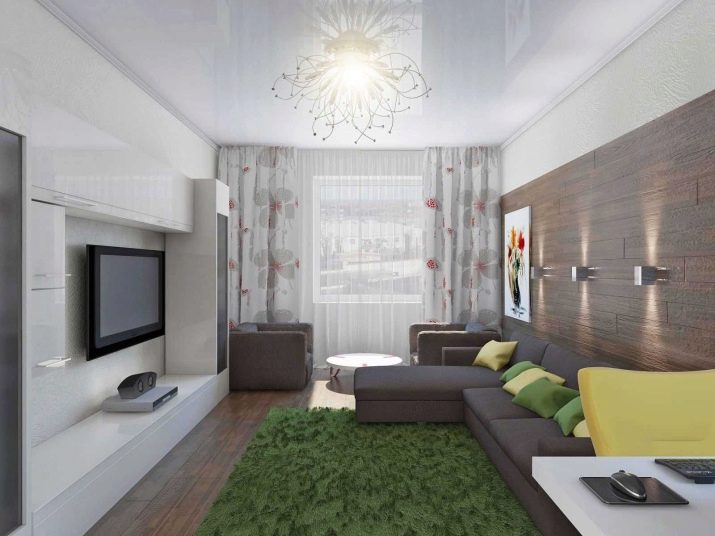
- Light sofa in a light space. The owners abandoned the large sofa in order to save space on the organization of an additional functional area.
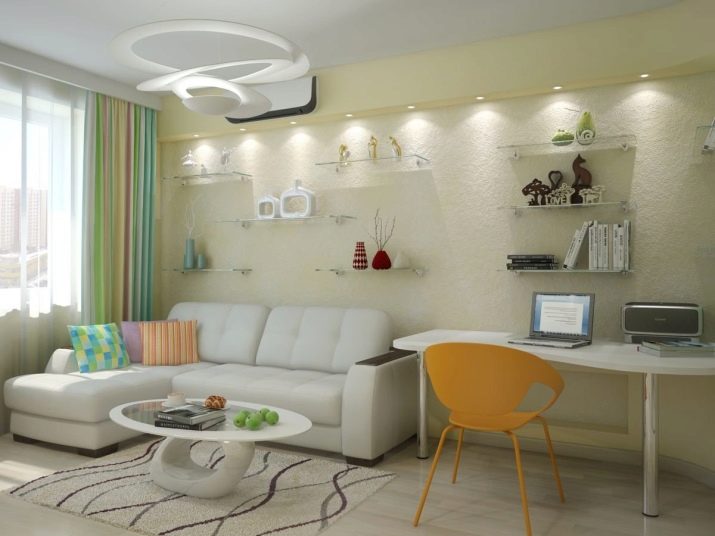
- A bit of retro and western aesthetics. It is more difficult to organize this design in an apartment than in a private house, but you can take the basic ideas. The table in the middle is the center of the composition.
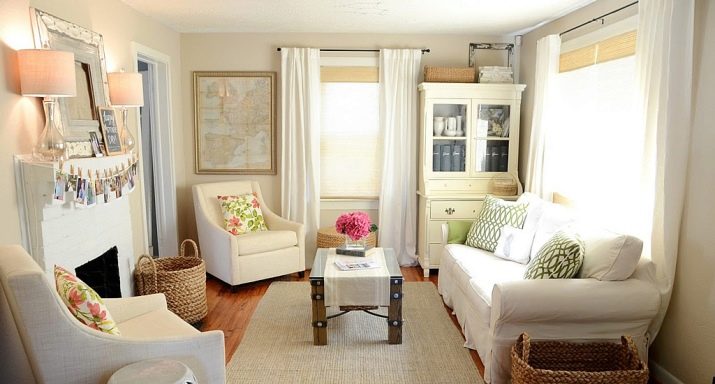
- An option that is both modern and practical... A rug, pillows, a table - everything helps a gray, slightly ascetic sofa to become even more comfortable. Very stylish and convincing.
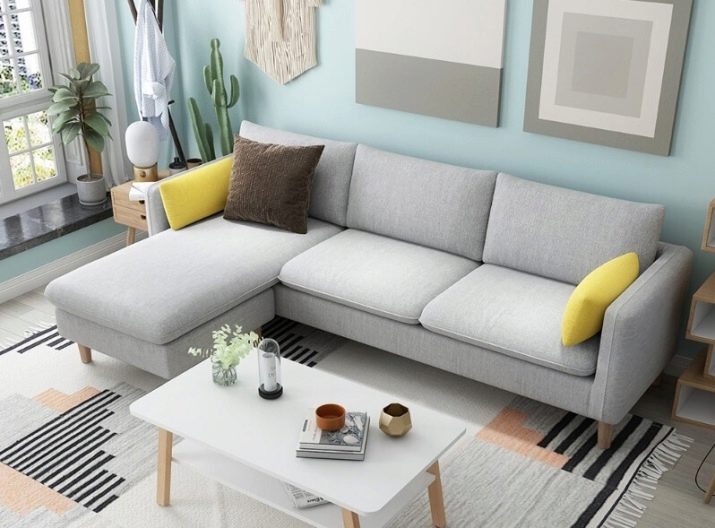
The choice of a sofa is really treated with awe, because this furniture will not change for a long time. Don't get emotional, incorporate rationality and common sense. And then the purchase will delight you for many years.











Hello everyone! Interesting article. It is written in great detail how to select a sofa.